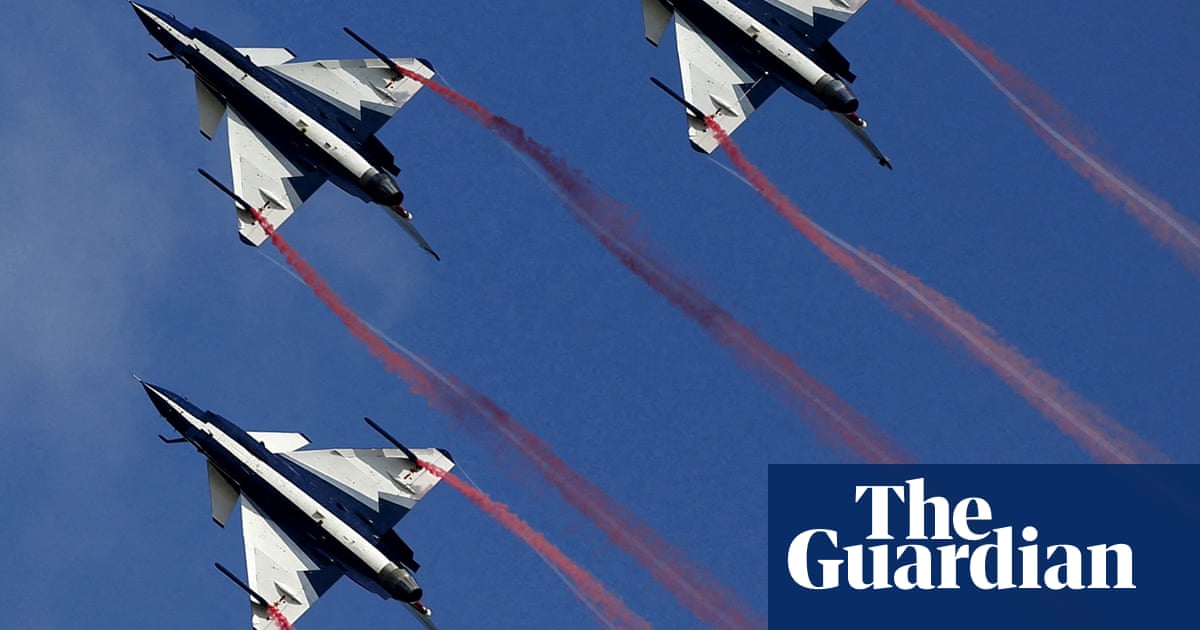As India andPakistantraded missile strikes over the weekend, and the world watched with horror as the two nuclear-armed neighbours erupted into open conflict, military analysts spotted something curious. Pakistan, it seemed, had used Chinese jets to shoot down India’s planes.
Last week, India launched missiles atPakistan, in retaliation fora militant attack in Indian-administered Kashmirin April that killed 26 people. The conflict escalated with mutual strikes and drone attacks.
Pakistan claimed to have shot down several Indian air force fighter jets with Chinese-made missiles fired from Chinese-made J10-C jets. The Pakistani foreign minister Ishaq Dar told parliament the Pakistani-flown fighters had taken down India’s French-made Rafales. Dar said he had informed the Chinese and they were pleased. China’s social media celebrated.
The use of J-10Cs by Pakistan would mark the first time the Chinese planes – and the PL-15 missiles they were carrying – have been used in combat anywhere in the world, giving military analysts a rare glimpse of their capabilities, and China’s military, the PLA, a crucial test case.
“Any state producing or buying weapons is keen to see how the product does in real conflict. Tests and exercises can tell most about capabilities of weapons, but the ultimate test is often combat,” said Siemon Wezeman, a senior researcher at the Stockholm International Peace Research Institute (Sipri).
China is a crucial ally of Pakistan. Sipri estimates that it is Pakistan’s biggest military weapons supplier, providing more than 80% of its stock from fighter jets to navy vessels and missiles.
Andrew Small, a Berlin-based senior fellow at the German Marshall Fund, said China gets particular benefit from seeing its weapons used against western equivalents. “It gives them a chance to assess their performance under far more complex and challenging conditions than usual, and with Pakistan this is not just about the fighter jets themselves, it’s about the missiles, the radar systems, and the whole technology spine of the Pakistani military, from electronic warfare capabilities to satellite systems.”
It’s not just western arms that China’s planes are being tested against. India has the support of both China’s biggest rival, the US, and its closest ally, Russia, which supplies 36% of India’s arms imports.
But analysts says it has provided a wake-up call about China’s military capabilities asit threatens to annex Taiwan.
“We may need to reassess the PLA’s air combat capabilities, which may be approaching or even surpassing the level of US air power deployments in east Asia,” Shu Hsiao-Huang, an associate research fellow at the Taiwan defence ministry-linked Institute of National Defense and Security Research, told Bloomberg.
Under the rule of Xi Jinping, China’s military has been modernising and expanding, with a goal to be capable ofan air and land invasion of Taiwan by 2027.
Hu Xijin, the former editor of the nationalistic Chinese state-linked tabloid Global Times, said the incident showed Taiwan should feel “even more scared”.
Part of China’s contingency planning is an expectation that the US military and potentially others would be involved in defending Taiwan.
Yun Sun, director of the China programme at the Stimson Center, said the two combat theatres were not directly comparable, as a Taiwan invasion would probably involve more input from the navy, marines and army than this month’s limited conflict between India and Pakistan.
“And technically, India did not use American weapon systems during this round,” Sun said. “But the surprising victory of Chinese J-10 and PL-15 [missiles] will force people to reconsider the military balance of power in the event of a Taiwan contingency.”
The apparent success of the J-10C against the Rafales also boosts China’s reputation as a manufacturer and seller of weapons. While China is the world’s fourth largest arms exporter, more than half goes to Pakistan and the rest is mostly to smaller developed nations. It must work around US sanctions.
The share price of Chengdu Aircraft Corporation, which makes the J-10Cs, soared on the news.
Small said Pakistan was often seen as a showcase for Chinese weapons.
“A good performance demonstrates to others the benefits of maintaining a close partnership with Beijing as PLA capabilities advance, especially given the rumours that China provided Pakistan, one of its closest strategic partners, with versions of the PL-15 missiles that have a longer range than the usual export variant,” he said.
Wezeman said the shooting was too limited to draw a lot of firm conclusions about the state of China’s military, which has also been mired in corruption scandals in recent years.
“That said, the clash seems to support a general assessment that Chinese weapons are proving to have become a match for western weapons.”
China’s military and government have neither denied nor celebrated the J-10C claims. The foreign ministry said when asked that it was “not familiar” with the J-10C situation.
But on Tuesday China’s vice-foreign minister Sun Weidong met with Pakistan’s ambassador to China, Khalil Hashmi. “China welcomes and supports Pakistan and India achieving a comprehensive and lasting ceasefire,” a foreign ministry statement said.
“China is ready to continue to play a constructive role in this regard.”
